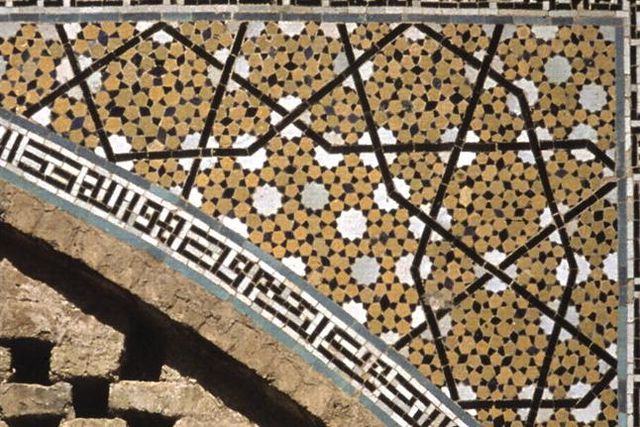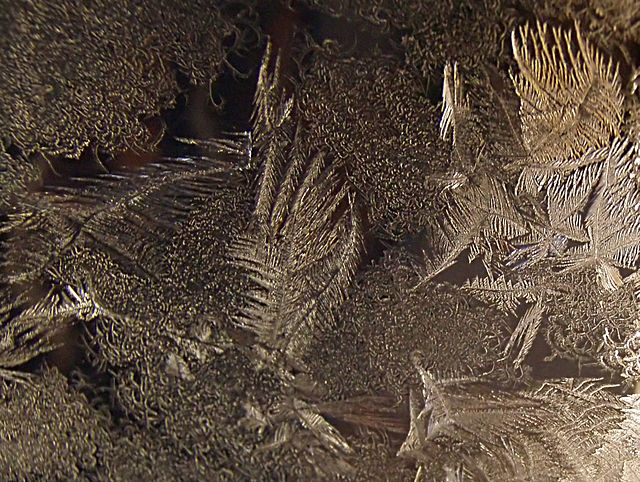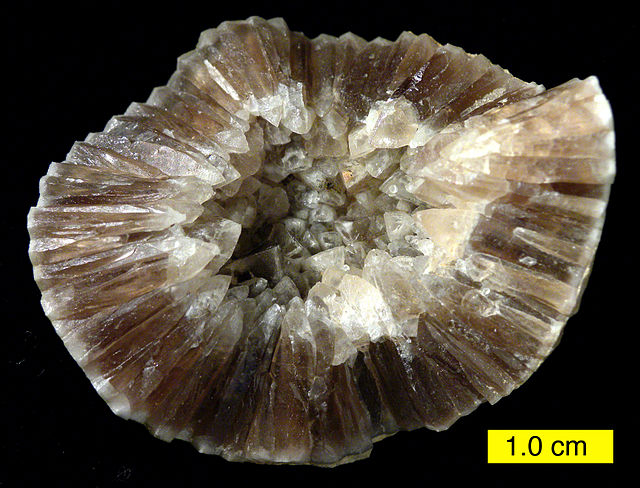A quasiperiodic crystal, or quasicrystal, is a structure that is ordered but not periodic. A quasicrystalline pattern can continuously fill all available space, but it lacks translational symmetry. While crystals, according to the classical crystallographic restriction theorem, can possess only two-, three-, four-, and six-fold rotational symmetries, the Bragg diffraction pattern of quasicrystals shows sharp peaks with other symmetry orders—for instance, five-fold.
Potential energy surface for silver depositing on an aluminium–palladium–manganese (Al–Pd–Mn) quasicrystal surface. Similar to Fig. 6 in Ref.
Girih-tile subdivision found in the decagonal girih pattern on a spandrel from the Darb-i Imam shrine, Isfahan, Iran (1453 C.E.). A subdivision rule to construct perfect quasi-crystalline tilings has been identified
Atomic image of a micron-sized grain of the natural Al71Ni24Fe5 quasicrystal (shown in the inset) from a Khatyrka meteorite fragment. The corresponding diffraction patterns reveal a ten-fold symmetry.
Electron diffraction pattern of an icosahedral Ho–Mg–Zn quasicrystal
A crystal or crystalline solid is a solid material whose constituents are arranged in a highly ordered microscopic structure, forming a crystal lattice that extends in all directions. In addition, macroscopic single crystals are usually identifiable by their geometrical shape, consisting of flat faces with specific, characteristic orientations. The scientific study of crystals and crystal formation is known as crystallography. The process of crystal formation via mechanisms of crystal growth is called crystallization or solidification.
Crystals of amethyst quartz
Macroscopic (~16 cm) halite crystal. The right-angles between crystal faces are due to the cubic symmetry of the atoms' arrangement
Ice crystals
Fossil shell with calcite crystals








